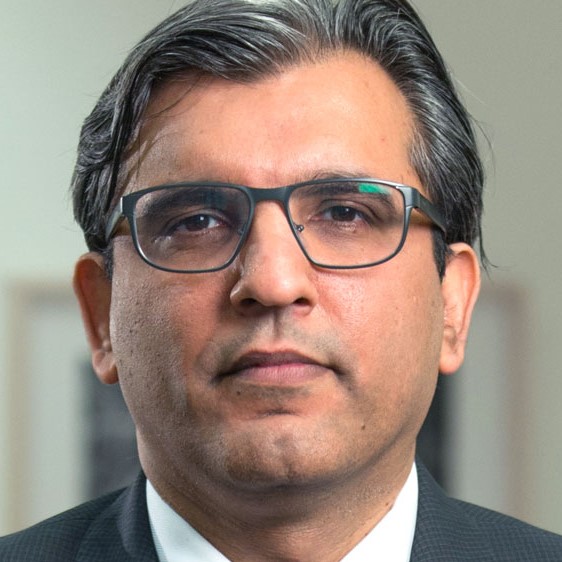Fed: Hike in May and go away?
At its May meeting, the Fed’s Open Market Committee raised its headline interest rates by another 25 basis points and indicated it would take a data dependency-driven approach going forward. The bank, however, stopped short of signalling an unequivocal peak to the cycle and Chair Powell was balanced in his communication, indicating that financial stability remains intact, and conditions have improved since March.
High and persistent inflation dynamics coupled with a super tight labour market means the wedge between financial stability and price stability continues to widen. We are seeing pressure building in the regional banks space again which is being tackled by the provision of liquidity and government-induced private sector solutions. However, the ensuing impact of credit tightening (despite the uncertainty around its timing and size) remains the key driver of the next phase of the macro cycle.
Currently, markets are pricing in sizeable cuts in official rates by the end of the year, reflecting elevated risk premia around a more forceful hard landing (Chart 1). Over the shorter term, we expect the Fed to bring that pricing towards the ‘higher for longer’ path in order to tackle inflation dynamics. But the likelihood of actual cuts happening as a cyclical recession comes through is not insignificant in our view, and may come fast if debt ceiling issues become more severe over the coming months.
ECB: Not pausing yet
The ECB also delivered a 25-basis-point rise, in line with market pricing, the smallest move it has made since the start of the hiking cycle in July 2022. Given some - albeit very modest - cooling in core inflation in March and the continued rapid tightening in lending conditions shown by the ECB’s latest Bank Lending Survey (BLS), this decision appears in line with the a data dependent approach.
The bank’s statement had a dovish tone, noting that policy tightening so far is already feeding into financing and monetary conditions "forcefully" and that the transmission mechanism itself remains uncertain. It did not give a clear indication of the rate path from here, only stating that future decisions will make policy rates "sufficiently restrictive".
At the same time, President Lagarde sent an emphatic message at the press conference that the ECB is “not pausing” and has “more ground to cover” given inflation dynamics. Indeed, Euro area activity remains resilient, particularly in the services sector, and the labour market is strong, suggesting we may not yet have seen the peak in wage growth and inflation. The lending survey did not point to any major impact from the stress we have seen in the banking system since March, and our own modelling does not indicate dramatic tightening from here.
All this potentially sets the stage for the ECB to hike again in June and then pause, although a lot can happen before then. Markets are pricing another quarter percentage point move, with a high probability of rates staying at that peak until the end of the year.
Limits to the Fed-ECB policy stance divergence
We believe there are limits to the policy divergence of the two banks and that market pricing is unlikely to be borne out, for a number of reasons. Firstly, we continue to believe that the tightening delivered by the Fed and the ECB is already sufficient to cause a recession. The impact of tighter policy is more obvious in the US, largely because the Fed started its hiking cycle four months ahead of the ECB. The real economy in the Euro area is yet to face the hit but it is coming. In this respect, the ECB has less ground to cover than they believe. We continue to stress that the ECB is very likely already in policy-mistake territory that may ultimately require a rapid course correction in coming months.
Secondly, even without further acute stress in the banking system in Europe, tight credit conditions are here to stay, ultimately leading to credit contraction and recession. Renewed banking stress in the US will likely also exacerbate the tighter credit dynamics in Europe. And if the US banking stress evolves into a more systemic shock and leads the Fed down the rates path currently priced in by markets, sentiment and financial conditions are likely to see the ECB facing spillovers. This will certainly challenge President Lagarde’s belief that ECB policy is independent of the Fed.
Asset allocation views - focus on relative opportunities
A key challenge for asset allocators is how best to balance the relatively strong current macro environment against tighter policy that is starting to hit the credit channel and the real economy. We believe selectivity is important, expressing caution through an underweight to corporate debt and an overweight to government bonds but remaining neutral on equities.
We are cautious on US equities preferring higher quality areas within both US equities and credit. We prefer European small caps to US small caps and European banks to US regional banks. We believe that the China reopening story is still intact, meaning China - and broader emerging markets - could be useful diversifiers if growth in the developed world stalls or banking stresses intensify.









































